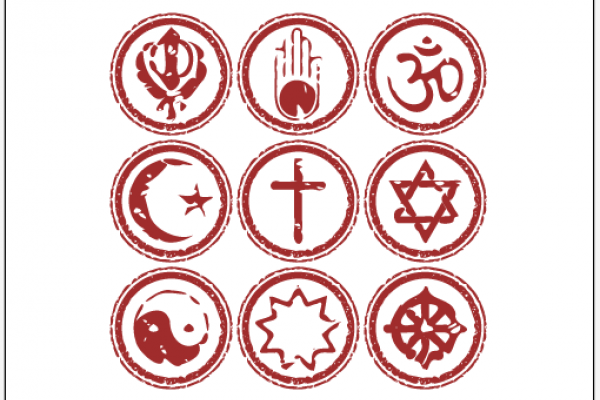BECAUSE I'M A Jew in Bethlehem, Pa., also known as “Christmas City USA,” I spend December celebrating Jesus’ birth. Representations of other religions are largely absent, but with evergreen trees adorning lampposts, the nativity scene at city hall, and 6-foot-high electric Advent candles, Christmas here is both beautiful and unavoidable.
Given Christianity’s dominance in the United States, similar examples extend into other seasons and across the country. Christian holidays and Sunday receive scheduling deference, Christian worship options are varied and plentiful, and debates over public “religion” focus almost entirely on Christianity. In contrast, Jews use vacation days to observe holidays, Jewish religious communities are far fewer, and there is no movement advocating Jewish prayer in schools.
Even in interreligious settings intended to be neutral, Christianity retains primacy. Exchanges emphasize concepts in Christianity, such as belief and faith, and downplay the Jewish stress on action, behavior, and ritual. When interfaith interactions turn to biblical texts, they rely on Christian hermeneutical approaches such as using English translations without acknowledgment of their underlying Hebrew and eschewing the Jewish practice of viewing the Bible through subsequent commentaries. To me, these verses look discomfortingly naked when not swaddled with sages’ centuries-old wisdom, and Christian translations often conflict with how I understand the original language.
In clergy gatherings, I feel the expectation that I should know Augustine and Aquinas without a corresponding expectation that Christian counterparts have heard of Rabbis Akiva or Eliezer. For practical purposes, I call the Jewish celebrations of Shavuot and Sukkot “Pentecost” and “Tabernacles,” names most Jews wouldn’t recognize; and despite my deep attachment to what “Sabbath” and “Pentateuch” represent, these English words seem oddly alien. Even on a relatively level playing field, I start from a defensive posture and find myself envious of what Christians take for granted that I can’t and don’t.
The challenge isn’t with our differences; interfaith encounters should respectfully highlight our disagreements for exploration, and we do no service to anyone by seeking shelter in similarities and fearing friction. Problems arise, rather, in presuming we share an identical approach, assuming everyone holds a Christian perspective, and conferring advantages on Christians while excluding non-Christians.
These examples illustrate “Christian privilege,” the social dominance and unearned benefits that generally flow to Christianity’s followers in the United States.
As common as this phenomenon is, the subject of religious privilege is usually missing from interfaith conversations. Discussions about racial reconciliation reference white privilege, and gender dialogues feature male privilege, but Christian privilege and religious power trends tend to be overlooked and ignored, intentionally or unintentionally.
Talking about Christian privilege is challenging, but essential. For our conversations to be authentic, honest, and justice-based, we must be aware of how each of us perceives and is perceived. It’s difficult to prevent the marginalization that Christians sometimes feel without considering how inter- and intrafaith dynamics play out more broadly for members of other faiths. Moreover, neglecting this topic in intentional interfaith interactions makes it that much more difficult to address in the wider world.I urge us all, but especially Christians, to study and reflect on these matters individually, with coreligionists, and with partners of other faiths. We can integrate questions of religious privilege into conversations we’re already having by asking ourselves what we have that others don’t, how these dynamics affect our interactions, and how we can compensate for resulting inequities. Initial steps toward inclusion can be as simple as seeking out resources for self-education, purposefully creating space for religious voices typically relegated to the margins, and being mindful of how interfaith conversations play out. In taking these and other steps, we can raise the quality of our relationships and better enable ourselves to see the image of the Divine that shines in each person.

Got something to say about what you're reading? We value your feedback!
